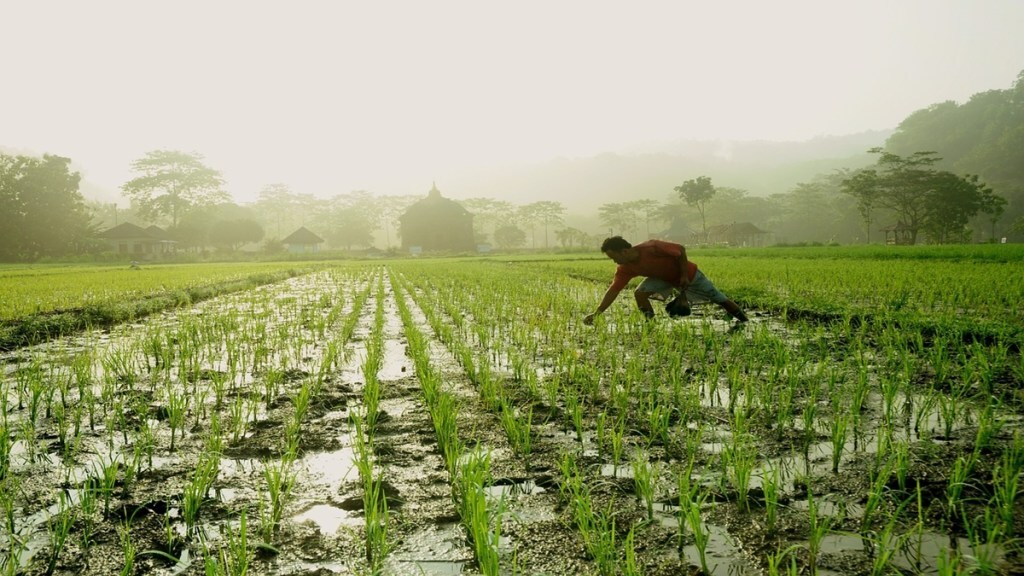The government is likely to set a target of Rs 24 trillion for agricultural credit by commercial, cooperative and regional rural banks in 2024-25. Last year, the credit flows to the priority sector stood at Rs 24.84 trillion, as against the target of Rs 20 trillion.
All through the last decade and more, farm credit targets were surpassed. The government has been trying to address the persisting regional imbalances by ensuring strong credit flows to the agriculture sector, the growth rates of which have been satisfactory in most of recent years, except 2023-24.
The credit target is going to be kept at a relatively low level in FY25 in the wake of the apprehension whether the credit to the sector is skewed towards boosting crop production, without pushing infrastructure creation to the desired extent.
“Most of the current agricultural credit flows to crop production, which needs to shift to investment credit for giving a fillip to infrastructure creation,” Shaji K V, chairman, National Bank for Agriculture and Rural Development (Nabard) had told FE earlier. “Almost 80% of our balance sheet is for the production credit, we need to reorient that to more investment credit,” he had said.
The government is also concerned whether a part of the credit to the sector is diverted.
Gross Value Added (GVA) for agriculture and allied activities grew at 1.4% in 2023-24, the slowest rate since 2018-19. The sectoral GVA expanded by 4.7% in 2022-23, solid by its standards. The lower growth in 2023-24 was primarily because of below-normal monsoon rainfall in 2023, that curtailed the output of several key crops.
In 2023-24, Rs 2.72 trillion of agri credit went to allied sectors such as animal husbandry such as dairy, poultry, fisheries etc.
The regional disparity in the credit flow to agriculture sector persisted last fiscal too, with Rs 12.5 trillion of the total loans going to five southern states – Andhra Pradesh, Telangana, Karnataka, Tamil Nadu and Kerala. In fact, the share of four southern states in farm credit rose steadily from 42.6% in 2017-18 to 5-.5% in 2023-24. These states accounts for only 17% of the gross cropped area.
Credit disbursal to Tamil Nadu was highest among states at Rs 4.39 trillion (17.6% of total country’s disbursal) in 2023-24, followed by Andhra Pradesh (Rs 2.96 trillion).
Five northern states – Rajasthan, Punjab, Haryana, Jammu & Kashmir and Himachal Pradesh – received about 15% of the total credit flow at Rs 3.74 trillion in the last fiscal year while the region’s share in gross cropped area is 20%.
The eastern region – Bihar, Jharkhand, Odisha and West Bengal received only 8.5% of the total agricultural credit flow at Rs 2.11 trillion in 2023-24 against the cropped area of 12%. The eight north-eastern states received agri-loans worth Rs 16,485 crore last fiscal, which was only 0.66% of country’s disbursement against having 3.2% of cropped area of the country.
To address regional disparity in agri-credit flow, officials said that Nabard is working with banks towards improving credit culture especially in eastern India by providing collateral in terms of social guarantee or a specialised fund and insurance products.
“However, despite growth in agricultural credit, there are institutional challenges such as region wise disparity in credit flow, lack of land records especially for share-croppers and tenant farmers and loan waiver announced by the state governments have led to a number of willful defaulters”, according to an official note.
Officials said that a large portion of agriculture credit flow to five southern states are mainly attributed to farmers opting for cash crops such as tobacco and spices and better credit culture in the region.
To address regional disparities in the flow of priority sector credit at the district level, RBI has taken the initiative to rank districts based on per capita credit flow. The apex bank has stressed on building an incentive framework for districts with comparatively lower flow of credit and a dis-incentive framework for districts with comparatively higher credit flow.
According to an official note, in FY23, commercial banks had a share of 72% of the total credit disbursed which was followed by cooperatives banks (13%) and Regional Rural Banks (15%).
Under modified interest subvention scheme of department of agriculture, farmers holding kisan credit cards are provided loans upto Rs 3,00,00 at 7% per annum for meeting their working capital requirement. Currently, out of 73.6 million KCC holders, 23.7 million belong to agri-allied sectors.
The scheme provides additional interest subvention of 3% for prompt repayment of the loan, thereby reducing the effective rate of interest to 4%.


